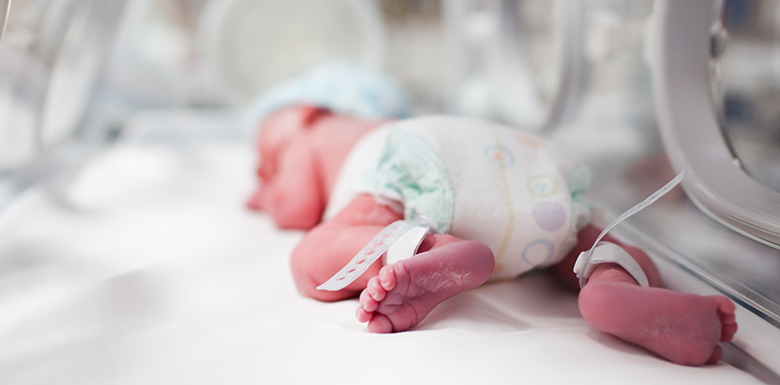10 Common Birth Injuries

Did your child suffer a life-altering injury during pregnancy or birth due to medical negligence? At Graham Scofield Injury Lawyers, we have successfully represented many children that suffered harm before, during, or after birth, whether the mother delivered the child vaginally or through a cesarean section (C-section).
When careless medical care causes your child to suffer permanent physical trauma or cognitive impairments, you should call our birth injury lawyers at (404) 939-9470 or submit your information through the online contact form. A doctor, hospital, or nurses’ negligence can lead to serious harm, and you and your child have the right to pursue compensation for your losses.
10 Common Birth Injuries
- Broken Bones: Newborns can suffer broken bones during birth, including collarbone fractures. Most bone fractures heal relatively quickly, but some can cause long term problems.
- Facial Paralysis/Bell’s Palsy: When pressure is exerted on a newborn’s face, such as by forceps or vacuum extraction, it can cause nerve damage on one or both sides of the face. Depending on the extent of the damage, paralysis may be temporary or permanent. Torn nerves may require surgery to improve function and appearance as much as possible.
- Brachial Plexus Injuries: There is a bundle of nerves known as the brachial plexus that connect a baby’s arms and hands to their spinal cord. The nerves begin at the upper spine and move through the neck, shoulders, arms, and hands. This group of nerves can be damaged during the birthing process. If the injury is minor or moderate, normal movement may return in a few months. If the baby suffers a severe brachial plexus injury, loss of movement and sensation can be permanent.
- Spinal Cord Injuries: A baby may suffer injury to their spinal cord. Depending on the extent of the damage, the infant may suffer reduced sensation, weakness, or loss of motion from the injury site and below. Spinal cord injuries are some of the most traumatic and catastrophic injuries a child can suffer. It can lead to permanent paralysis and myriad other consequences, including incontinence, blood circulation issues, respiratory difficulties, increased risk of infection and illness, and sexual dysfunction as an adult.
- Perinatal Asphyxia: This is also known as birth or neonatal asphyxia. When a child is deprived of oxygen during the birthing process for several minutes, they can suffer cell death in their brain, heart, longs, and other organs. Infants may recover fully from mild-to-moderate asphyxia. However, if the infant was deprived of oxygen for an extended period of time and did not receive the right treatment as soon as possible, they can suffer form long-term effects.
- Cerebral Palsy: CP is a group of disorders that affect a person’s balance, posture, and muscles. The condition is caused by abnormal brain development or brain damage. Symptoms of CP vary from person to person. Some children may experience mild symptoms while others suffer from severe muscle weakness and lack of coordination. CP also can lead to vision, hearing, or speech problems, joint issues, scoliosis, seizures, and intellectual disabilities. Most cases of CP involve premature birth and complications immediately following birth.
- Hypoxic Ischemic Encephalopathy (HIE): This condition is caused by oxygen deprivation, or in some cases, fetal stroke. HIE typically leads to severe developmental and cognitive delays, motor impairments, and epilepsy. It also is one of the main causes of infant death.
- Intracranial Hemorrhage: An infant can suffer bleeding within the brain or skull due to oxygen deprivation, trauma, or medical negligence during the pregnancy or birth. If the hemorrhage is severe, an infant will need surgery to stop the bleeding. In the best cases, infants fully recover. However, depending on the extent of the bleed and how quickly it is diagnosed and treated, it can have lasting side effects.
- Caput Succedaneum: If the mother and child experience a difficult birth, or physicians use vacuum extraction, the infant’s scalp may be bruised and swell. This typically heals within a few days. In some cases, the infant also experiences jaundice, which can be treated without a child suffering any lasting harm.
- Cephalohematoma: A bump may form on a newborn’s skull within hours of birth. The bump is an accumulation of blood below the periosteum—the protective membrane over the skull. This usually heals within a few weeks or months. However, it can also increase the risk of other health effects and needs to be monitored.
Did Your Child Suffer a Birth Injury?
If your child suffered a birth injury that led to long-term physical or cognitive disability or a severe injury, call us right away. Our birth injury lawyers at Graham Scofield Injury Lawyers will thoroughly review your circumstances, including analyzing your child’s medical records and obtaining an expert opinion. If your child’s injuries are the result of negligence, we will represent you in a medical malpractice claim.
Contact us online or call (404) 939-9470 to schedule a free consultation.

